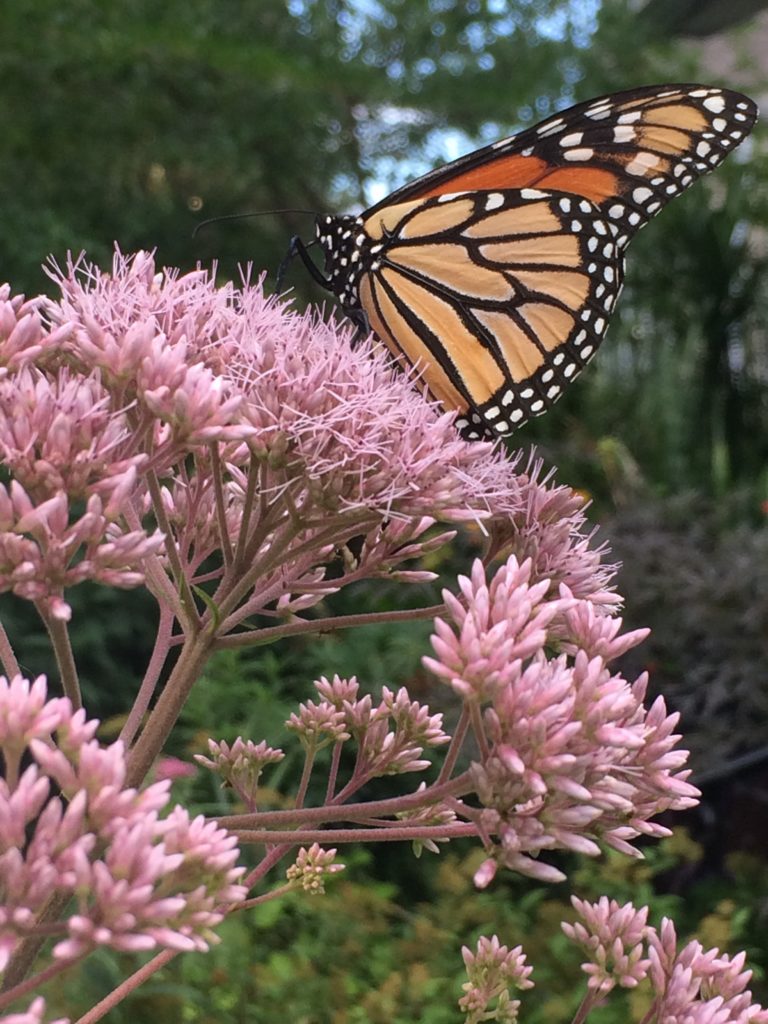Monarch butterflies need your help! Viewed as a spiritual symbol of life after death, these beautiful creatures are facing extinction due to development, farming, and deforestation. The plants that attract, feed, and fuel them for their metamorphosis from a caterpillar to a colorful creation are less available to them. It’s critical that we help change that by planting the plants they love, stopping the use of pesticides, and teaching future generations to do the same.
Russ Henry knows a lot about Monarch butterflies, so we tapped that knowledge. Russ is a landscaper, naturalist, gardener, educator, and owner of Minnehaha Falls Landscaping & Giving Tree Gardens. With a passionate commitment to protecting and growing ecosystems across Minnesota, Russ and his team install, manage, and restore gardens throughout the Twin Cities without the use of pesticides or synthetic fertilizers. They empower homeowners to provide habitat to the natural world of wonders that should be surrounding us at all times. Russ says, “Monarchs are fighting an uphill battle, and it’s imperative to take action now, or they will disappear.”
Monarch butterflies are beautiful and delicate, yet strong and smart. Plants provide the nourishment they need to stay strong throughout their life cycle. Russ says monarchs have a long proboscis, so they can probe into flowers with tubes that have nectar. What are their top plant favorites?
- Meadow Blazing Star – absolute favorite!
- Joe Pye Weed
- Woodland Sunflower
These plants are native to Minnesota and are perfectly suited for gardens, including rain gardens. Pollinators love to feast on them as well, so you will feed and support bumblebees, like the Rusty Patched Bumblebee that is on the endangered species list. These pollinators play a vital role in growing our food. Hummingbirds will come to your yard for lunch too!
Russ says, “insecticides kill Monarch butterflies directly and herbicides kill milkweed, so they are unable to lay their eggs, so please refrain from using pesticides.” On their way to Canada, they lay their eggs on the underside of Milkweed plants in the United States, including Minnesota, so it’s critical to plant milkweed in your garden. They go through four stages from egg to larvae (caterpillar), the pupa (chrysalis), and then, the adult butterfly. We’re now seeing monarchs that have come up from Mexico. Later in the season, we’ll be seeing those returning from Canada on their way to Mexico. Russ says, “Monarchs instinctively know to fly to Mexico before the cold winter approaches. They travel far to complete their life cycle, so they need heroes like you along the way!”
Russ encourages families work together to support and protect Monarch butterflies, so they will be around for future generations. Be careful with their delicate bodies but know you can help them stay strong.
